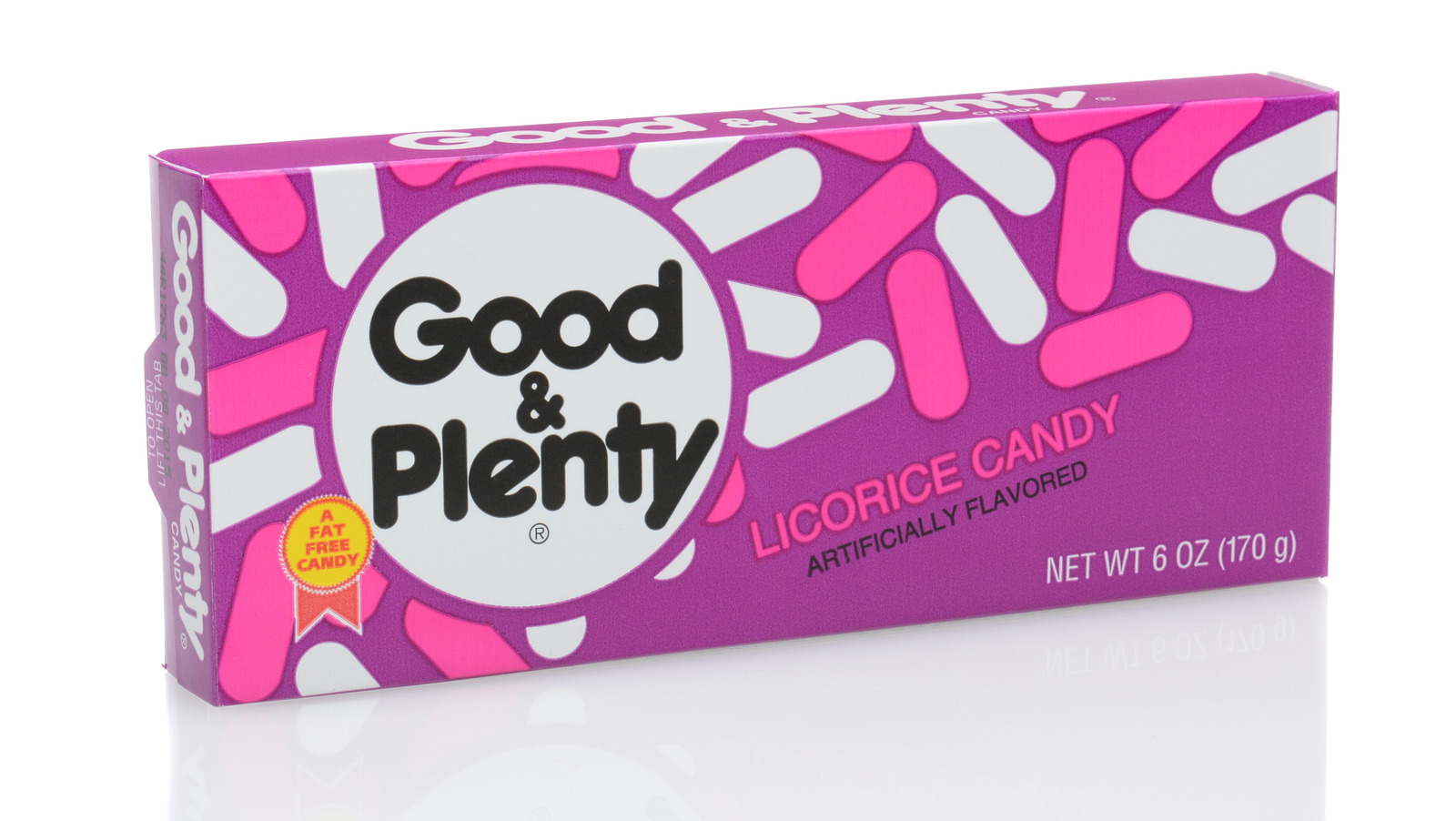
What’s The Actual Flavor Of Good & Plenty Candy? – The Daily Meal
Good & Plenty, those little pink and white capsule-shaped confections, may not be the most popular candy at the concession stand, but having been born well over a century ago they’re certainly a mainstay. In fact, the candies, which were created in 1893 by the Quaker City Chocolate & Confectionery Company of Philadelphia, Pennsylvania, are among the oldest candy in the United States still in production.
Like some other vintage candies, their flavor isn’t immediately apparent from their appearance — if the pink and white coloring were to make you guess strawberries and cream you’d be wrong. Unlike with more modern candies, the color actually doesn’t correlate with the flavor at all.
The pink and white pellets, which you could be forgiven for thinking look more like medicine than a sweet treat, are among the most controversial candies on shelves. Redditors ask “So who actually likes Good & Plenty candy?” and they’re a regular feature of most hated candy lists and surveys. So what exactly is this old-school candy supposed to taste like? Turns out, it’s something well-known for being a divisive flavor, with vocal fans and detractors alike — black licorice.
Good & Plenty are black licorice with a candy coating
 Fotograv/Getty Images
Fotograv/Getty Images
At the core of each Good & Plenty is a little nugget of black licorice coated in white- and pink-colored candy. Black licorice seems to be the subject of perpetual disagreement, either loved or hated and often associated with older generations. And if you’re not among them, you might be wondering what exactly black licorice even is.
As Kelila Jaffe, Food Program Coordinator for the Department of Nutrition, Food Studies, and Public Health at New York University explains to HuffPost, licorice is the more common name for a plant, Glycyrrhiza glabra, “but the term also refers to the confections derived from that plant’s sweet roots (black licorice).” Those confections, like the inside of a Good & Plenty, are generally made by combining licorice extract, sugar, and a binder (among other additives) to produce a shiny, black, chewy candy.
According to Hershey, Good & Plenty’s current owner, the licorice component is made from real licorice extract, derived from the licorice plant. Other ingredients include wheat flour and carmine, a pigment derived from insects, so vegan and gluten-free candy lovers should steer clear.
Black licorice may carry some unexpected health risks
 Hispanolistic/Getty Images
Hispanolistic/Getty Images
Believe it or not, black licorice is controversial for medical reasons as well — and not just because it’s a sugary treat. According to the American Heart Association, overconsumption of black licorice can lower the body’s potassium levels, which can cause serious heart problems ranging from arrhythmia to congestive heart failure. Research also suggests that licorice can have negative effects on a developing fetus when eaten by pregnant people, and according to Mount Sinai it may interact with common drugs including diuretics, oral contraceptives, and diabetes medications.
The good news is, eating black licorice in small amounts is typically fine. The FDA cautions that adults over 40 run the risk of heart issues if they consume more than two ounces of black licorice a day for at least two weeks. If you’re a licorice fanatic of any age, though, it’s a good idea to talk to your doctor to make sure black licorice — including the famously infamous Good & Plenty — isn’t contraindicated by any of your other lifestyle factors, conditions, or medications.





























































